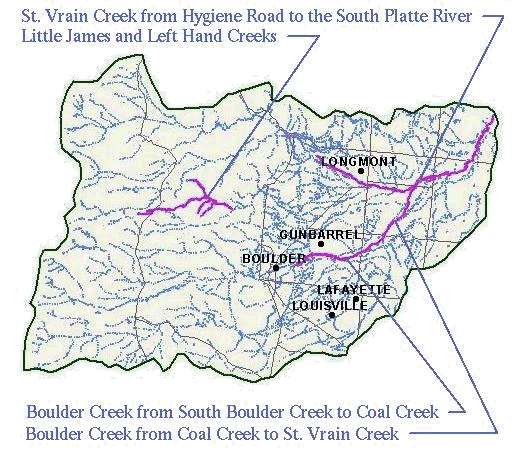
|
|

|
|
What is a TMDL?
A Total Maximum Daily Load (TMDL) describes the total amount of a pollutant that a waterbody can receive and still meet water quality standards. That is, the TMDL is the sum of allowable loads of a single pollutant from all contributing point and non-point sources, and includes a margin of safety and consideration of seasonal variations. The TMDL also includes the reductions needed to meet water quality standards and allocates the reductions among the sources in the watershed. The TMDL process is a method of analyzing sources of pollution and allocating responsibility among those sources. The TMDL process was established by section 303(d) of the 1972 Clean Water Act.
Identification and Prioritization of Water Quality Limited Waters
The State compares recent water quality information of a stream segment with the associated water quality standards for that stream segment. Where technology-based effluent limits in discharge permits alone are not stringent enough to assure that water quality standards are not met, these stream segments are designated "Water Quality Limited" and added to a document called the 303(d) list. The 303(d) list includes the identification of the specific component(s) (such as nitrate, lead, or sediment) that is/are causing water quality problems for that stream segment. TMDLs are required for all components listed for each segment on the 303(d) list.
Once listed, the State prioritizes the list of stream segments, considering:
Development and Implementation of TMDLs
Water bodies determined to be higher priority will be addressed first. TMDLs for these waters are then developed. The development of a TMDL includes five basic steps:
Once a TMDL is established, the "load" is divided into two types:
The allocations, or limits, apply to existing and future sources. Once the allowable pollutant loadings have been distributed to the various sources, strategies for achieving those limits are evaluated and selected.
Finally, the TMDL is implemented. This requires participation from all stake holders. The Wasteload Allocation portion of the TMDL can be implemented through effluent limits in discharge permits. For non-point sources, voluntary controls or locally enacted controls are necessary to implement the Load Allocations.
Proposed Changes to the TMDL Process
In August 1999, the U.S. EPA submitted proposed revisions to the TMDL process. One proposed change is to include in state lists a comprehensive identification of all water bodies exceeding water quality standards, whether from pollutants (residues, wastes, materials, etc.) or from pollution (human-induced alteration of the water s integrity). The proposed changes suggest organizing the lists into four parts:
TMDLs would then be established for Part 1 pollutants only. The public comment period for the proposed revisions ended in January 2000. Since then, the U.S. EPA has been evaluating comments on the revisions, and it is anticipated that the final rule will include a number of important changes from the proposal. You can read the latest news on TMDLs here.
Status of Our Waters
There are approximately 21,000 listed waters in the United States, with approximately 40,000 TMDLs needed. Nationwide, excess sediments, nutrients, and pathogens are leading reasons for impairments. You can view the 303(d) list for Colorado here.
In the Boulder area, the following water bodies are on the 303(d) list:

A 1993 case study found that Boulder's Wastewater Treatment Plant (WWTP), which is above the water quality limited segments of Boulder Creek, was meeting its effluent limits for ammonia, and that the primary causes of the high un-ionized ammonia concentrations were high water temperature and pH (For more information on ammonia, select here). These factors were linked, in part, to physical degradation of the creek's riparian zone. To read more about this study, see the EPA Case Study of Boulder Creek.
Sources of Information
The following sources were used in preparing this document. Please see these sources for more information.
U.S. Environmental Protection Agency Office of Water s Total Maximum Daily Load (TMDL) Program
U.S. Environmental Protection Agency Region 8 Total Maximum Daily Load (TMDL) Program
Letter from J. Charles Fox, EPA Assistant Administrator for Water, to the U.S. Congress. April 5, 2000. (pdf format)
Additional links regarding TMDLs
List of EPA Documents Related to Water Quality Modeling and Total Maximum Daily Loads Guidance
Denver Regional Council of Governments (DRCOG) Water Resources
Local TMDL Studies
EPA Case Study of Boulder Creek
EPA Case Study of Denver Metro- The South Platte River Segment
Do you know more about TMDLs or have sources to share? Share with BASIN.